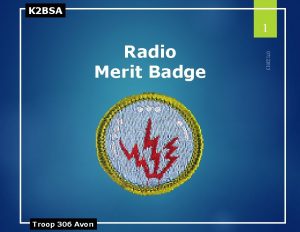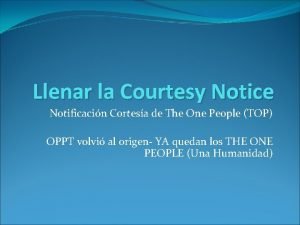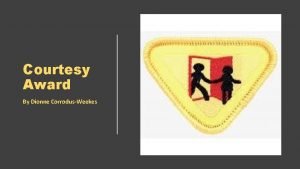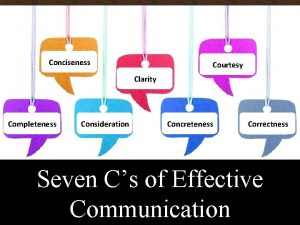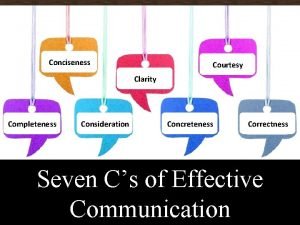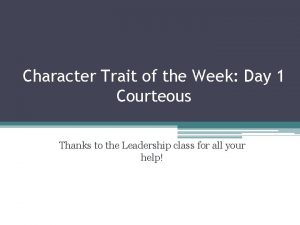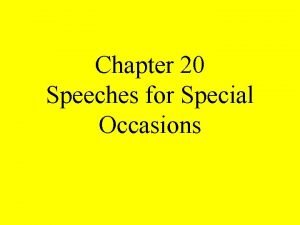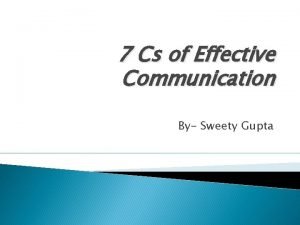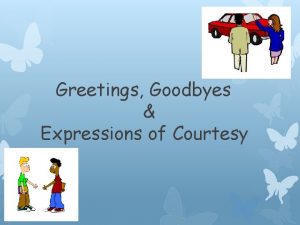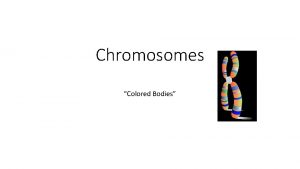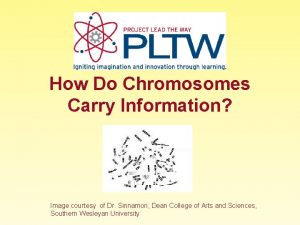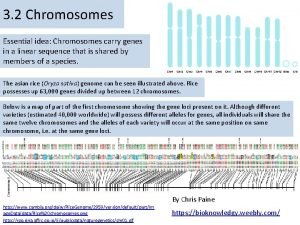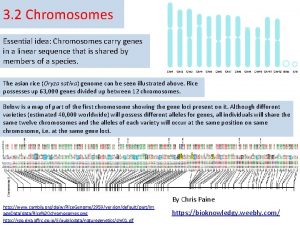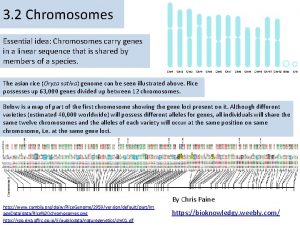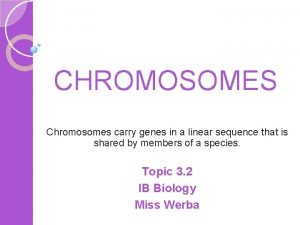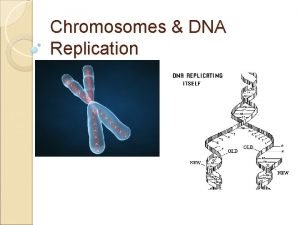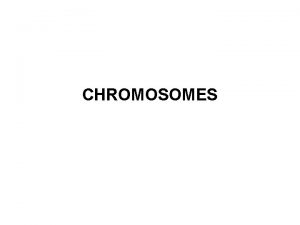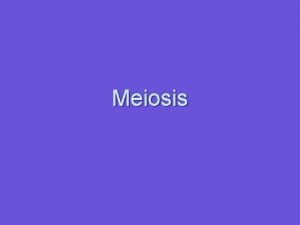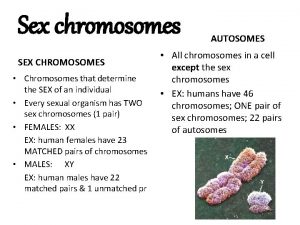How Do Chromosomes Carry Information Image courtesy of











- Slides: 11

How Do Chromosomes Carry Information? Image courtesy of Dr. Sinnamon, Dean College of Arts and Sciences, Southern Wesleyan University Principles of Biomedical Science © 2013 Project Lead The Way, Inc.

U. S. Department of Energy Human Genome Program http: //www. ornl. gov/sci/techresources/Human_Genome/education/images. shtml

Chromosomes – What We Know • Located in the cell’s nucleus • Humans have 23 pairs (46 total) – Each pair contains 1 from mom & 1 from dad – Pairs 1 -22 are body (somatic) chromosomes – Pair 23 are sex chromosomes and determine the gender of the person • XX = Female • XY = Male • Passed to new generation in sperm and egg cells (sperm & egg cells are called gametes) • Inherited diseases are passed to new generation on chromosomes • Composed of DNA

Reproductive Cells and Chromosomes • Chromosomes contain the genetic material • Each reproductive cell, or gamete, (sperm and egg) contains one copy of each of the 23 human chromosomes

Fertilization • Sperm cell (containing 23 chromosomes) fuses with egg cell (containing 23 chromosomes) • The nucleus of the sperm cell is injected into the egg cell, this is known as fertilization • After the sperm fertilizes the egg, a zygote containing 23 pairs of chromosomes (46 total chromosomes) is formed • A zygote is the very first cell of a baby • The zygote divides to create two cells, which divide to create four cells, which divide to create eight cells, etc… until there is an entire baby

Early Zygote Nuclei from egg and sperm fusing Used with the permission of Richard Sherbahn, MD. Advanced Fertility Center of Chicago http: //www. advancedfertility. com/embryos. htm

Chromosome Function • Chromosomes contain the code or instructions for how to make specific proteins which then determine the organism’s traits (Remember this is known as The Central Dogma) • The specific instructions for a protein are on sections of the chromosome called genes

What Is a Gene? • A section of DNA that corresponds to a discrete unit of heredity – Generally a gene is the information needed to make a specific polypeptide (chain of amino acids) – Proteins that are a single polypeptide are usually associated with a single gene – Proteins that consist of multiple polypeptides are associated with multiple genes

Chromosomes and Sickle Cell • Chromosome 11 carries the instructions (genes) to make the hemoglobin protein • There are different versions of these genes: – Normal – healthy – Mutated or changed – Sickle cell or other hemoglobin disorder • Remember Sickle Cell is recessive and is a mutation that causes Glutamic Acid (hydrophilic) to become Valine (hydrophobic) in the hemoglobin. This causes the hemoglobin to not bind oxygen, which causes the red blood cells (erythrocytes) to sickle.

Heterozygous Advantage • Consider capital “S” to be healthy and lowercase “s” to be sickle cell • Sickle Cell is recessive so to have sickle cell a person must be ss (homozygous recessive) • A carrier for the trait would be Ss (heterozygous) – This is advantageous for the person because they do NOT have Sickle-Cell disease, but DO get protection from malaria • Especially beneficial in Africa where malaria is prevalent – However, the person has the potential of having child with Sickle Cell disease if he/she has a child with a Ss or ss person • A person that is SS does not have sickle cell disease, will not have a child with sickle cell disease, but also is not protected against malaria

Questions *Please answer on composition paper using properly formed complete sentences 24 Informal Points 1. 2. 3. 4. 5. 6. 7. How many chromosomes do humans have? Where do they come from? What is the significance of the 23 rd pair? What is a gamete and what process do they go through to create a zygote? What does “a child is an equal mix of mom and dad” mean? What chromosome is mutated to cause sickle-cell? If only one chromosome is mutated does the person still have sickle cell disease? Explain why mutated chromosomes 11 cause sickle cell disease. What is the heterozygous advantage when dealing with Sickle Cell? Explain. Why is sickle cell disease African in origin?
